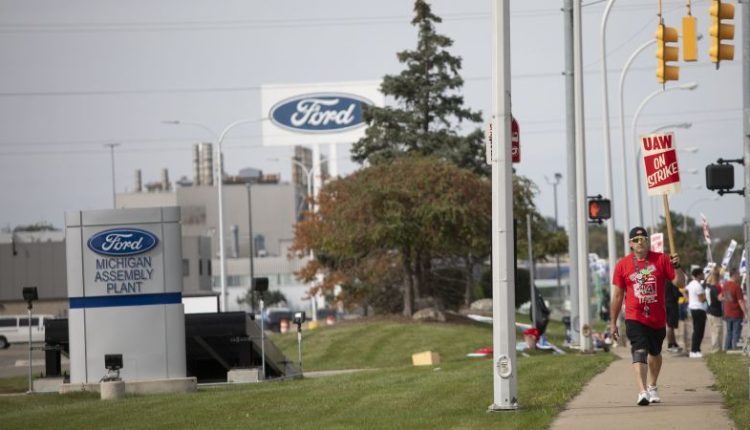The Big Three are paying a big price to end the UAW strike — but that won’t necessarily jack up car prices
The historic United Auto Workers union strike against the nation’s three unionized automakers — Ford, General Motors, and Stellantis, known as the “Big Three” — could finally be over soon.
This news comes after all three automakers reached tentative deals with the union.
Ford was the first to announce it reached a tentative agreement with the UAW on Wednesday. Then came Stellantis over the weekend and GM today.
The strike, which began nearly seven weeks ago, has been the longest US auto strike in 25 years. It was the first time in its history that the UAW staged a simultaneous strike against the nation’s three unionized automakers
The strike began at one assembly plant at each company, but the UAW expanded the scope of the strike six times since then in an effort to step up pressure on the companies at the bargaining table.
The production losses have likely cost the automakers billions of dollars. But the damage it’s done to the broader economy carries an even heftier price tag.
The first five weeks of the strike has had an economic impact of $9.3 billion, the Anderson Economic Group estimated.
Their estimate takes into account:
- Lost wages for striking workers and other workers who were laid off or forced to work fewer hours
- Lost earnings for the Big Three automakers
- Supplier losses including delays and cancellations for car parts orders and the wage impact it’s had on workers within the industry
- Dealer and customer losses as a result of indefinite delays of new vehicles
The linchpin in negotiations between the UAW and Ford came on October 11, when the union struck Ford’s largest and most profitable plant, my colleague, Vanessa Yurkevich, reported.
Similarly, the UAW’s hardest hits against Stellantis and GM came shortly before both announced tentative deals.
Now you’d think people in the market for a new car would pay the price, by way of higher car prices, given all the added costs the Big Three will face if the tentative deals go into effect.
But as my colleague Chris Isidore — CNN’s expert reporter in all things strike-related — tells me, there’s a good chance cars won’t get more expensive because of all this.
Here are a couple of reasons why:
- Car prices are based on supply and demand. For instance, when demand was high but supply was constrained by a shortage of computer chips needed to build new cars a few years ago, prices went up to record levels. And at the end of the day, it was the auto dealers, which are independent businesses, that benefitted the most from buying cars at wholesale prices from automakers and selling them to consumers earning massive profits.
- The automakers might cut corners somewhere else to maintain their pre-strike prices (think lower quality or less aesthetically appealing interiors, wheels or tires)
- The Big Three have to stay competitive with nonunion automakers which keeps their car prices in check
- The automakers will need to find ways to build cars more efficiently and figure out how to make money selling electric vehicles
TLDR: The biggest loser is probably going to be the automakers who are going to see their profits decline one way or another.
You may have noticed I use the word “tentative” multiple times. That’s because the historic strike doesn’t officially end until it is ratified by rank-and-file members.
And it is possible that members at one or more companies could vote down the tentative deal, leading to a resumption of the strike at that company, CNN’s Yurkevich and Isidore wrote.
Read the full article here

